Vunlerability
Cultural Heritage
Prepared by the European Centre on Prevention and Forecasting of Earthquakes (ECPFE) & the Editorial Board
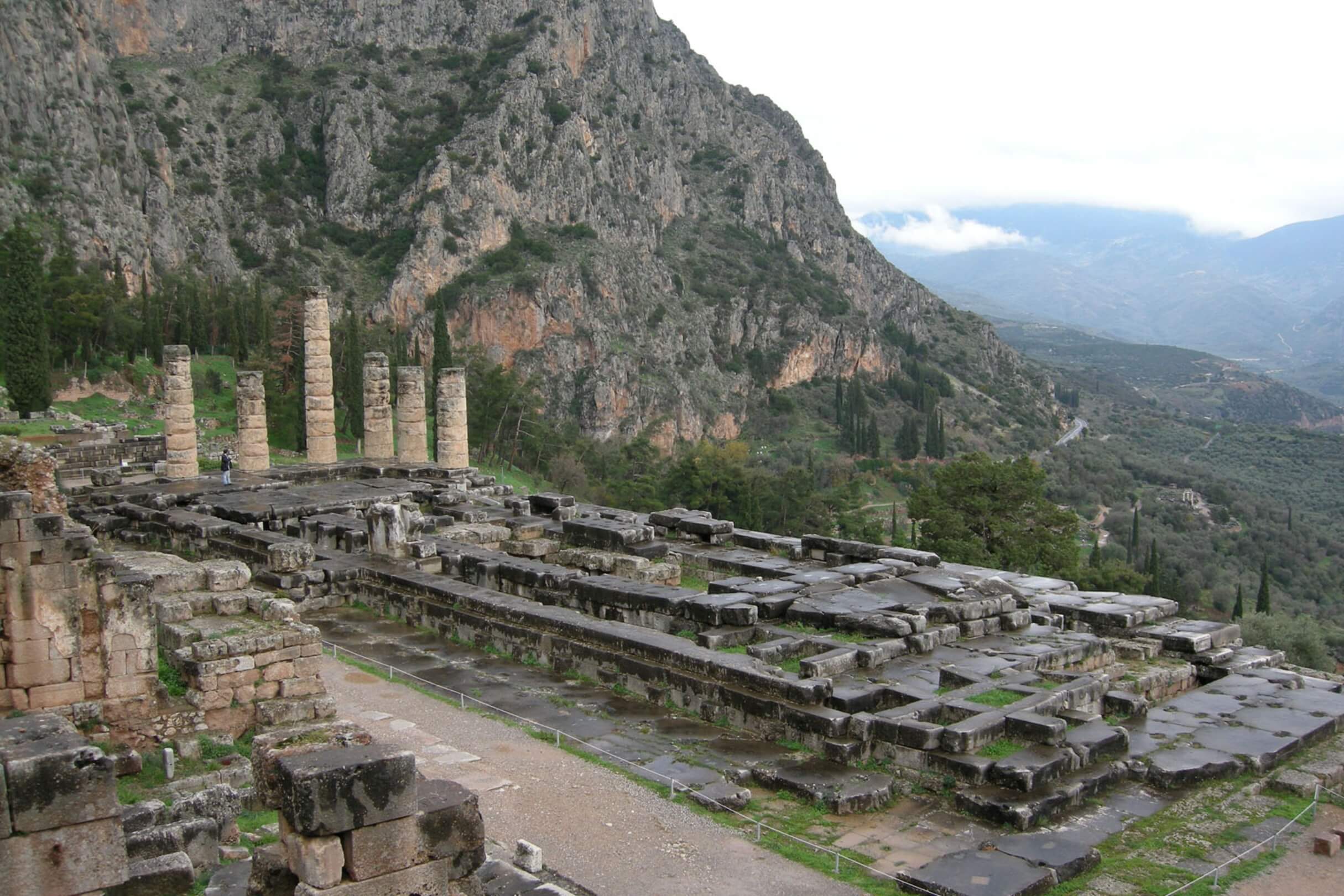
Based on the UNESCO’s Convention concerning the Protection of the World Cultural and Natural Heritage 1972, the following shall be considered as cultural heritage:
Monuments: architectural works, works of monumental sculpture and painting, elements or structures of an archaeological nature, inscriptions, cave dwellings and combinations of features, which are of outstanding universal value from the point of view of history, art or science.
Groups of buildings: groups of separate or connected buildings, which, because of their architecture, their homogeneity or their place in the landscape, are of outstanding universal value from the point of view of history, art or science.
Sites: works of man or the combined works of nature and of man, and areas including archaeological sites, which are of outstanding universal value from the historical, aesthetic, ethnological or anthropological points of view.
At its 16th session in December 1992, the World Heritage Committee adopted three main categories of cultural landscapes: the clearly defined landscape, the biologically evolving landscape, including petrified landscapes and evolving landscapes, and associated cultural landscapes.
Cultural landscapes represent the „combined works of nature and man“. They are indicative of the evolution of human society and habitation over time, under the influence of natural constraints and/or opportunities presented by their natural environment, and of successive social, economic and cultural forces, both external and internal. They should be selected based on both their outstanding global value and their representativeness in terms of a well-defined geopolitical region and also for their ability to illustrate the essential and distinctive cultural elements of those regions.
The term „cultural landscape“ encompasses a variety of manifestations of the interaction between humanity and its natural environment. Cultural landscapes often reflect specific sustainable land use techniques, taking into account the characteristics and limits of the natural environment in which they are located and a particular spiritual relationship with nature. The protection of cultural landscapes can contribute to contemporary sustainable land use techniques and can maintain or enhance the natural values in the landscape. The continued existence of traditional land use patterns supports biological diversity in many regions of the world. The protection of traditional cultural landscapes is therefore useful in conserving biological diversity (UNESCO February 1996: 10-11).
Cultural heritage can be threatened and affected by various hazards, including natural processes, phenomena or human activities that may cause loss of life, injury or other health effects, damage to property, social and economic disruption or environmental degradation. The geological or geophysical and the climate-driven hazards have a high potential to cause all of the above adverse effects.
Due to the above hazards and their impact, many of the elements of cultural heritage can be included in the List of the World Heritage in Danger. This list is clearly defined in Article 11 (4) of the Convention for the Protection of the World Cultural and Natural Heritage:
1… a list of the property appearing in the World Heritage List for the conservation of which major operations are necessary and for which assistance has been requested under the Convention. This list shall contain an estimate of the cost of such operations. The list may include only such property forming part of the cultural and natural heritage as is threatened by serious and specific dangers, such as the threat of disappearance caused by accelerated deterioration, large-scale public or private projects or rapid urban or tourist development projects: destruction caused by changes in the use or ownership of the land; major alterations due to unknown causes; abandonment for any reason whatsoever; the outbreak or the threat of an armed conflict; calamities and cataclysms; serious fires, earthquakes, landslides; volcanic eruptions; changes in water level, floods, and tidal waves. The Committee may at any time, in case of urgent need, make a new entry in the List of World Heritage in Danger and publicize such entry immediately (UNESCO 1972).
Paragraph 6(vi) of the Operational Guidelines states that,
(i) When a property has deteriorated to the extent that it has lost those characteristics, which determined its inclusion in the World Heritage List. It should be placed on the World Heritage in Danger List, subsequently the procedure concerning the possible deletion from the List will be applied (UNESCO February 1996: 3).
For the protection, restoration and recovery of monuments, groups of buildings, sites and objects of cultural heritage and cultural landscapes, the competent authorities should be prepared and implement rapid and effective structural and non-structural measures to effectively anticipate, respond to and recover from the effects of possible, imminent or current disasters and their impact on cultural heritage elements. Structural measures include any physical construction to reduce or avoid the potential effects of hazards, or the application of engineering techniques or technology to achieve strength and resilience to hazards in structures or systems. Non-structural measures are measures not involving physical construction that use knowledge, practice or agreement to reduce the risks and impacts of disasters, in particular through policies and laws, public awareness, training and education.
As cultural property reflects the ways of living, thinking, and doing of a community, the preservation of related buildings, sites and objects plays a significant role to the linkage of the past with the present and the future. Moreover, the cultural property of each people makes its contribution to the cultural heritage of all humankind and to the culture of the world. Thus, damage induced by natural and man-made hazards and related disasters to cultural heritage impoverishes humankind.
Cultural heritage can be threatened and affected by various hazards. Among these, the natural and man-made hazards and related disasters have high potential to cause considerable impact on cultural heritage. Especially, earthquakes and their primary and secondary environmental effects (surface faulting, slope failures, ground cracks, tsunami), floods, fires and erosion have already caused heavy damage to various cultural heritage sites and buildings around the world. Moreover, man-made hazards and related disasters including armed conflicts, technological disasters and looting have already severely affected cultural heritage sites worldwide.
As cultural property reflects the ways of living, thinking, and doing of a community, the preservation of related buildings, sites and objects plays a significant role to the linkage of the past with the present and the future. Moreover, the cultural property of each people makes its contribution to the cultural heritage of all humankind and to the culture of the world. Thus, damage induced by natural and man-made hazards and related disasters to cultural heritage impoverishes humankind.
Earthquakes threatens many of cultural heritage objects around the world. The earthquake ground motion can cause structural and non-structural damage to monuments, group of buildings and sites ranging from light cracks in their non-structural elements to heavy crack patterns to facades, corners, roofs and floors leading to their partial or total collapse. Similar damage to cultural heritage objects can be generated by primary and secondary environmental effects including mainly coseismic surface ruptures, liquefaction phenomena, landslides, ground cracks and tsunami.
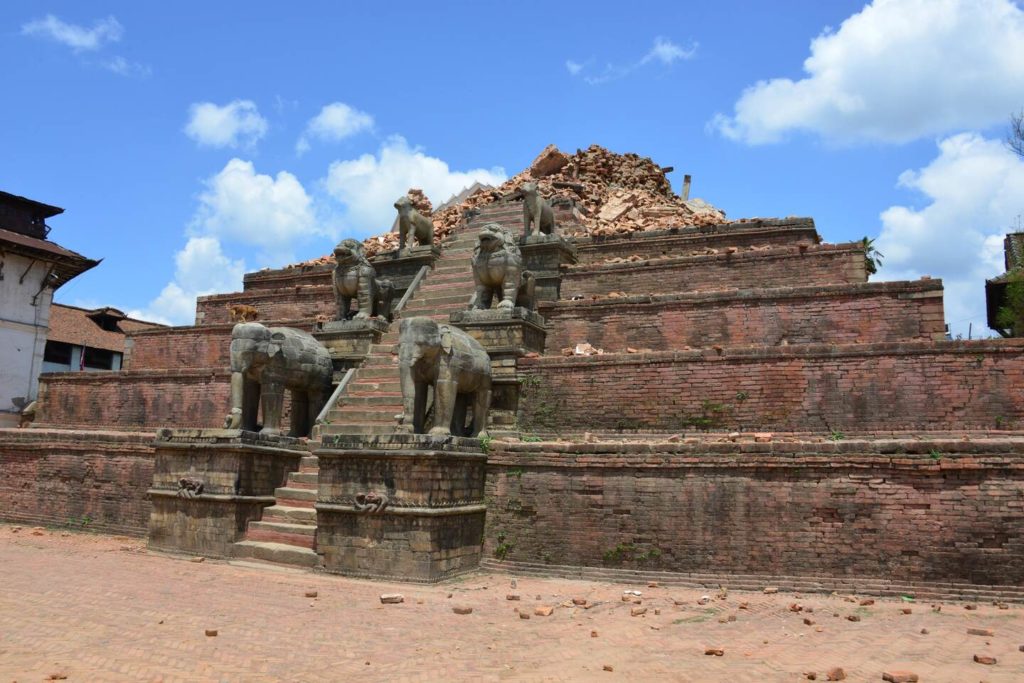
An Mw=7.8 earthquake struck Nepal on April 25, 2015 at 11:56 (local time). The shock was felt throughout Nepal and in India, Bangladesh and Tibet. Along with its largest Mw=7.3 aftershock on May 12, it severely affected 14 Nepal districts resulting in 8891 fatalities, 22,303 injuries, millions of homeless, earthquake environmental effects (EEE), damage on buildings and infrastructures and great economic losses. Based on field reconnaissance in the affected area immediately after the main shock, primary EEE were not detected, while secondary EEE included slope movements, liquefaction, ground cracks and hydrological anomalies especially in the Kathmandu valley suggesting a combination of directivity and deep basin effects (Lekkas et al., 2017).
Among the dominant building types, old cultural heritage buildings were constructed in the earthquake-affected area (Lekkas et al., 2017). They are classified as buildings with traditional brick masonry and timber frame structures, brick masonry structures in lime or mud mortar and buildings made from stones. Three styles of architectural design are observed in the affected area: (a) Tiered/Pagoda, (b) Chaitya/Stupa and (c) Shikhara style. Despite many differences within each style, the main load-bearing system of the traditional temples comprises multi-layered brick walls. The outer layer is made of good quality (fired clay) bricks, the middle layer of brick fragments and mud and the inner layer of poor quality materials (sun dried bricks).
Masonry and cultural heritage structures suffered most damage due to inadequate construction and poor maintenance. In case of sounder construction, such buildings remained intact.
Major destruction was observed at various square complexes, world heritage sites and many other historical structures of cultural and archaeological significance in Kathmandu valley (Lekkas et al., 2017). The observed damage varied significantly based on the construction age and the structural systems. It mainly comprised residual deformation of the ground floor level of the temple, cracks in masonry walls, partial or total collapse of masonry walls, sway of the timber frame and partial or total collapse of the structure. Damage to old cultural heritage structures were due to old construction age, unusual structural systems, fatigue of monuments from past earthquakes, lack of maintenance and poor quality restoration after the 1934 Nepal-Bihar earthquake (Lekkas et al., 2017).
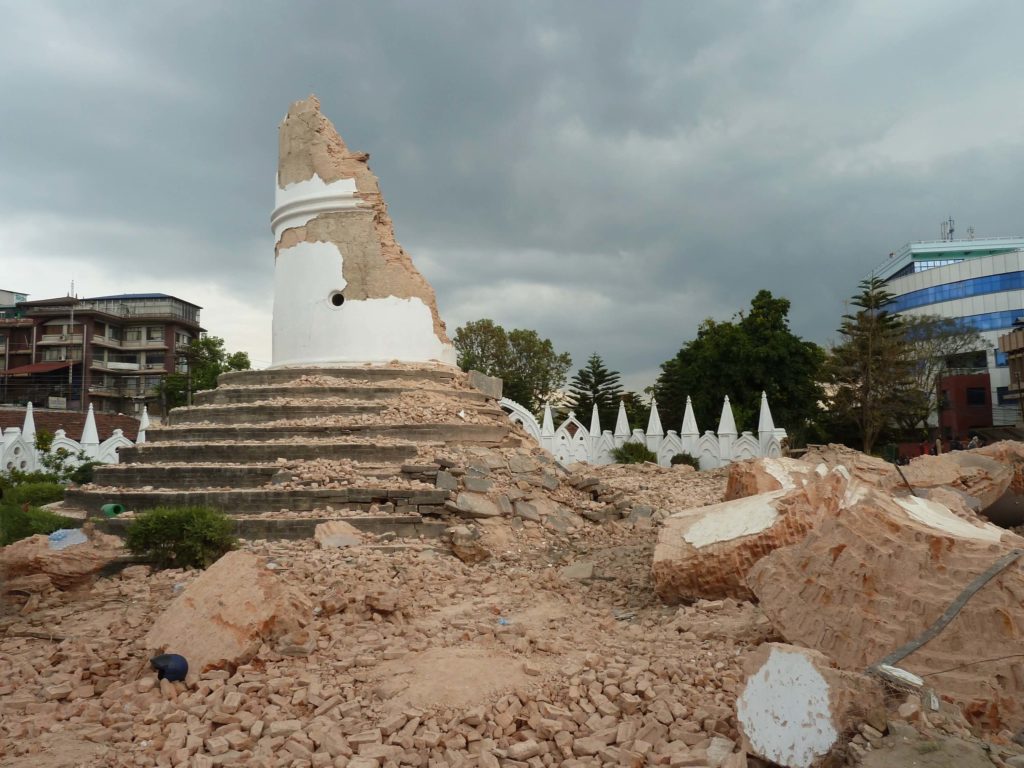
The climate crisis have resulted in the increase of several hazards and their related disasters. Among the increased disasters, fires have high potential for generating damage to cultural heritage sites, buildings and objects. Fires can be mainly initiated by lightning, forest fires, gas leaks, fireworks, faulty electrical installations or equipment, smoking, candles, arson, construction and renovation works, etc. Moreover, they accompanied strong winds in the majority of the cases and earthquakes. Several hundreds of destructive fires have already recorded worldwide with great impact on cultural heritage. They have resulted in total or partial burning of major archives, collections or artefacts, deformation by heating and complete destruction of significant historical buildings and conflagrations of historic town centers.
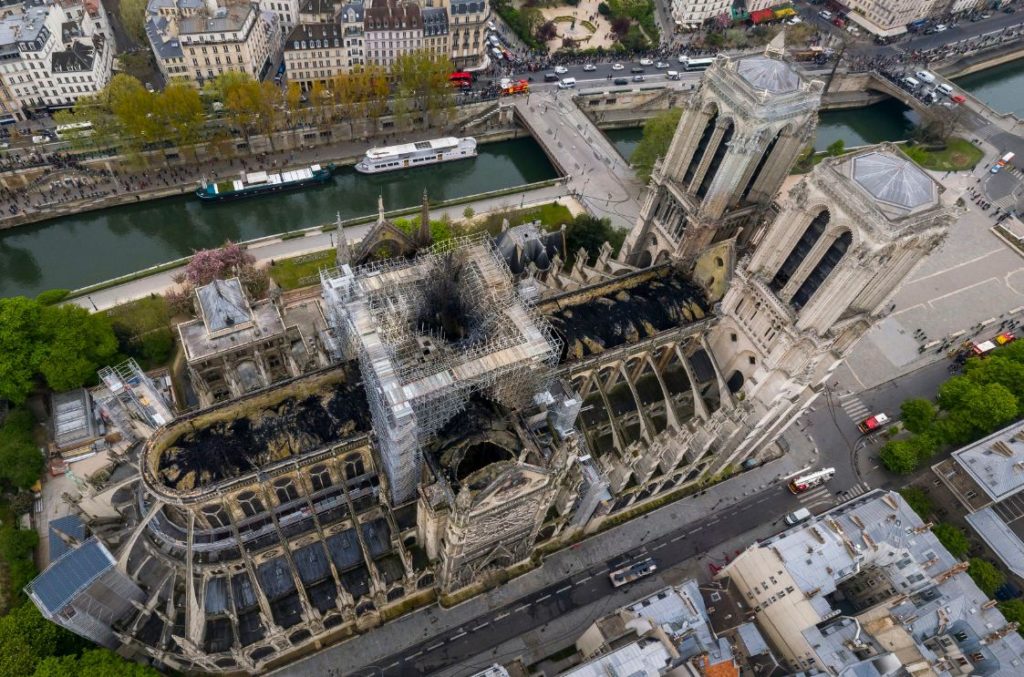
The Notre-Dame cathedral has been included on UNESCO’s List of World Heritage Sites since 1991 as it is a major religious structure, a masterpiece of medieval architecture, a repository for important relics and art, a symbol of Paris, and a French landmark.
On 15 April 2019, the 850-year-old cathedral of Notre-Dame in Paris caught fire. It was speculated that the fire was linked to ongoing renovation works. The main structure remained intact, but the fire resulted in destruction of the medieval wooden trusses supporting the roof and toppling the famous spire bringing down some 750 tons of stone and lead.
Firefighters, emergency workers, the staff of the cathedral and experts charged with preservation of the art and architecture saved all of the historic relics and works of art. They saved the façade, towers, walls, buttresses, and stained glass windows after their rapid response. The Great Organ with over 8,000 pipes built in the 18th century was also saved but sustained water damage. Fortunately, the copper statues on the spire had been removed before the fire due to the ongoing renovation works. The stone vaulting forming the ceiling of the Notre-Dame cathedral had several holes, but remained generally intact.
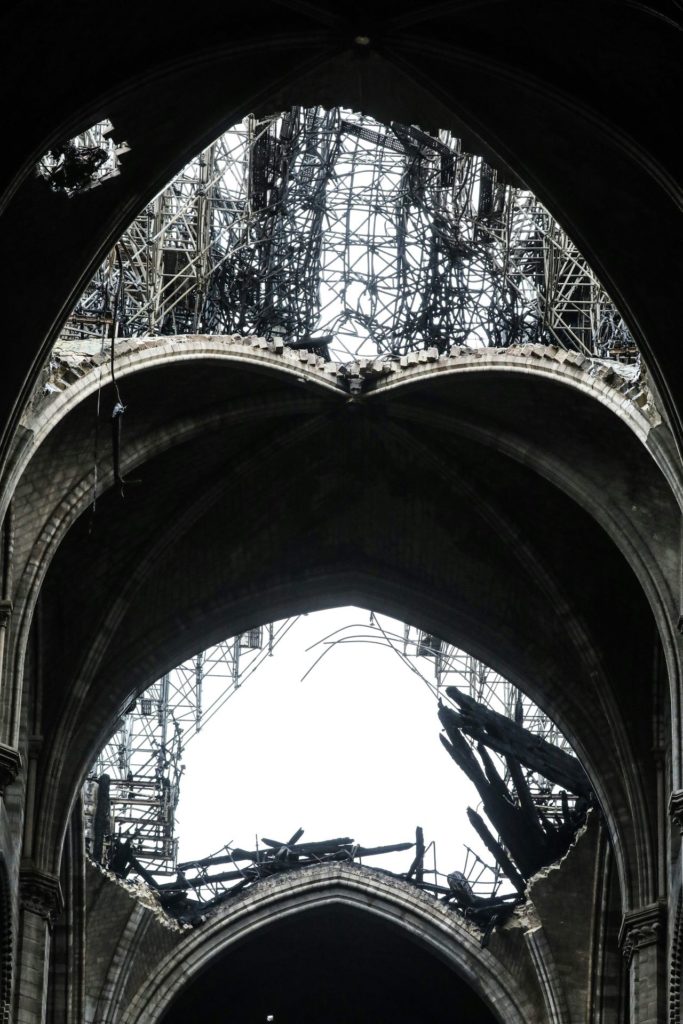
Floods are the most frequent natural disaster with increasing adverse effects on the built environment. As regards their extent and duration, they can range from small events with local impact to disastrous events affecting large territories and several countries. The flood-induced damage varies from light damage to non-structural elements to the partial or total collapse of the structure. It can be mainly attributed to static and dynamic loads, to crushing with floating objects, to wetting of construction materials and building structural and non-structural elements as well as to chemical pollution and biological infection. Great danger for moveable cultural heritage (for example archives and items in museums) are flash floods, which are characterized by a rapid rise and fall of floodwaters. Despite the fact that floods are usually of short duration, the restoration of the cultural heritage sites require a very long time and considerable effort.
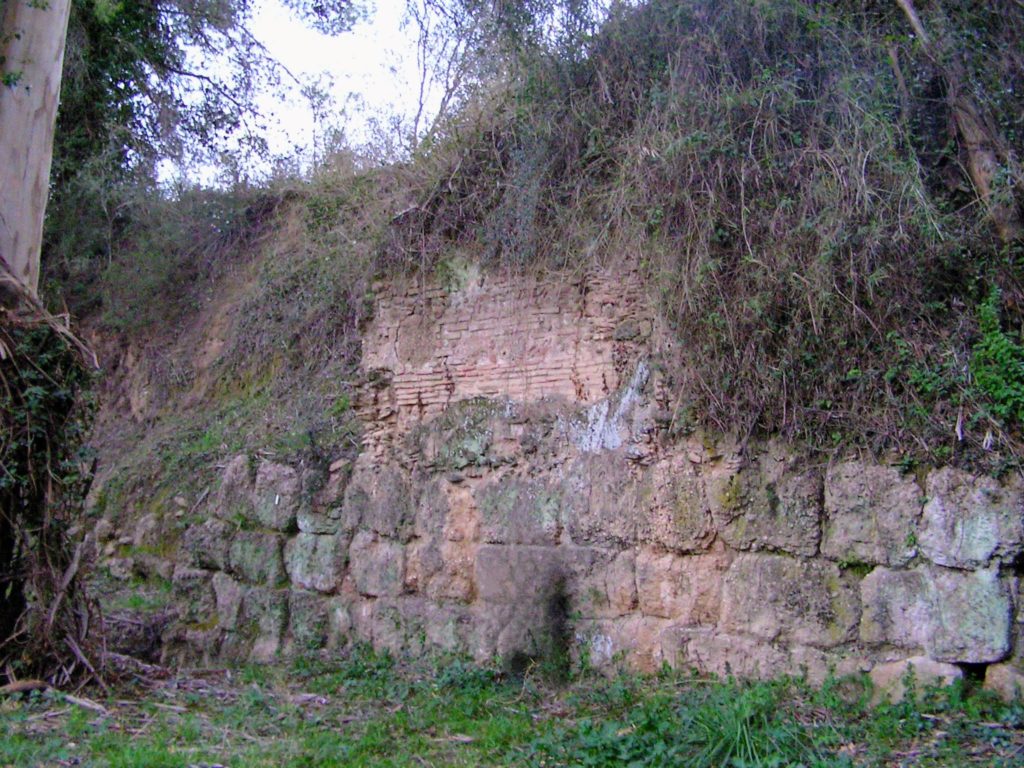
The archaeological site of Olympia has been inhabited since prehistoric times. In the 10th century B.C., Olympia became a center for the worship of the Greek God Zeus. The Altis – the sanctuary to the gods – has one of the highest concentrations of masterpieces from the ancient Greek world. In addition to temples, the site comprised the remains of all the sports structures erected for the Olympic Games, which were held in Olympia every four years beginning in 776 B.C.
During its long existence at an area with intense endogenic and exogenic processes, the archaeological site has been affected by several hazards, including earthquakes, landslides, floods and fires. Fountoulis et al. (2008) presented the disastrous consequences of the fluvial action of Kladeos on the flood protection works of Olympia site from the prehistoric to the roman period. They combine archaeological and geological data for the study area and they perceived changes and displacements of the adjacent Kladeos River bed. They distinguished three periods of strong floods related to climate changes based on the mishits of ancient flood protection works. The first flood period took place from 1300-400 BC during the transition from low to high temperatures. The second flood period last from 200-400 AD. The main characteristic of this period is the extensive alluvial events on Kladeos River connecting with relatively high temperatures and major flows. The third flood period took place from 700-1400 AD as a result of alternations of warm and cold conditions. During this period the Sanctuary of Olympia was entirely covered by flood deposits and disappeared until the first excavations of 19th century AD.
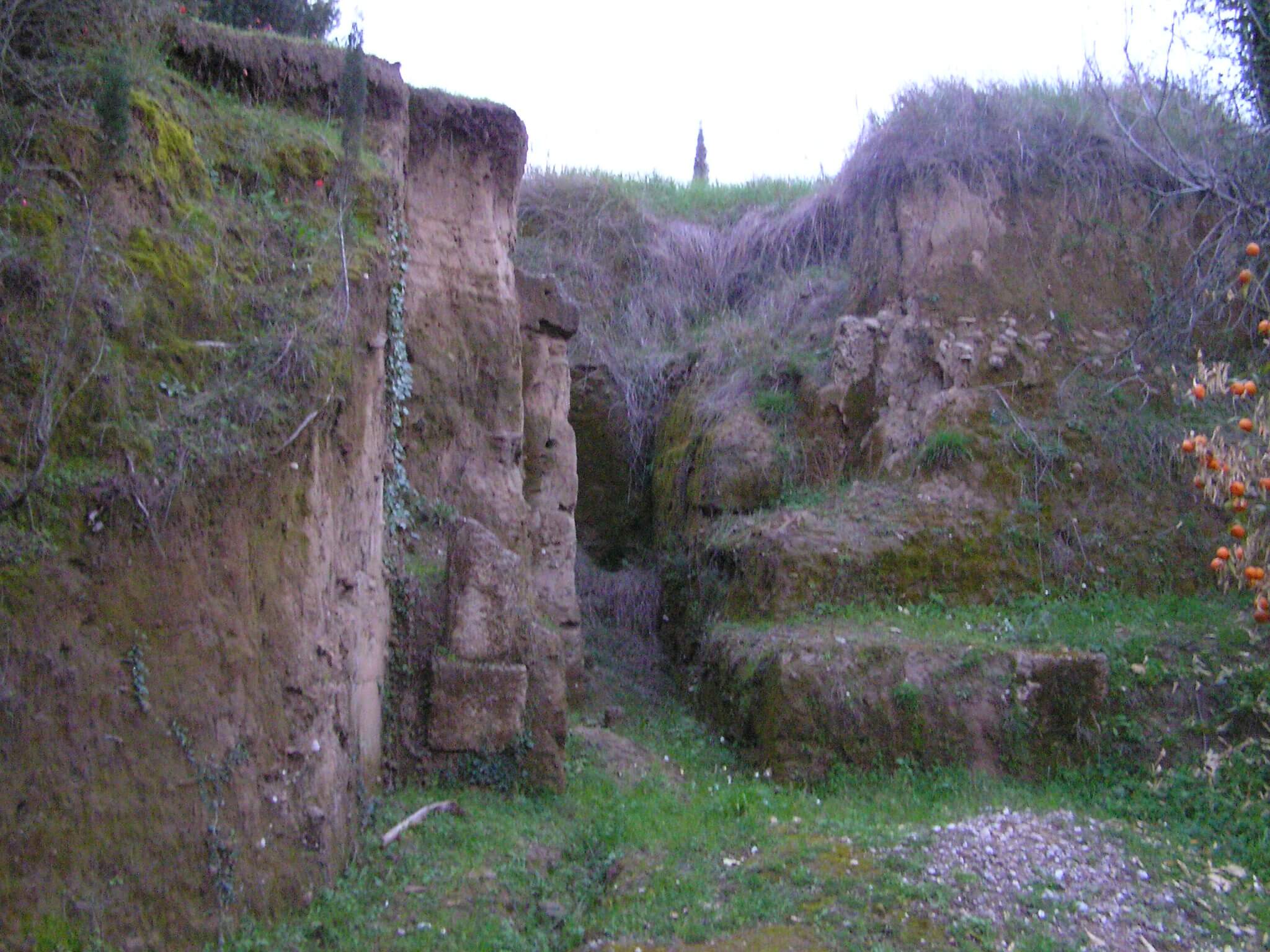
The Saint George church (Old Cairo, Egypt) is a unique masonry building complex comprising structures of different time periods (Pharaonic, Medieval, Roman periods, 1909 construction, 1909–1930 modifications, 1941 reconstruction). The area has been affected by floods before the construction of Aswan High Dam and high groundwater level of Nile River resulting in loading and unloading of soils and ground settlements. Moreover, the high groundwater level flooded the lower floor levels of the structure. The building complex is founded on native dense alluvial sands, silts and clayey soils, during the low water periods of river flow. Parts of the temple are founded on shallow depth, while its inner part is built on remnants of a Roman tower, which is founded on deeper soils. The church was at moderate risk to damage from extensive construction vibrations, differential settlements from groundwater lowering or earthquakes (Lekkas et al., 2018).
Taking into account various factors including the geological, geotechnical and hydrogeological conditions of the site, church failures were attributed to the building complexity and to differential settlements induced by groundwater level fluctuations (Lekkas et al., 2018). Lowering of the water table as part of a greater dewatering project was proposed and expected settlements were calculated. After terminating groundwater lowering, differential settlements were measured confirming the abovementioned calculations. For preservation of the monument, the maintenance of the groundwater level below the oldest foundations along with the installation of crack monitoring systems were proposed (Lekkas et al., 2018).
Slope failures are mainly triggered by earthquakes, heavy rain, floods, river and sea erosion and human activities. They have also high potential for generating damage to cultural heritage monuments, buildings, sites and objects. They are classified to various types including falls, slides, flows and avalanches of rocks and soils triggered and controlled by various seismotectonic, topographic, climatic and lithological factors comprising lithology, elevation, slope, aspect, curvature, distance to faults, rivers and roads, peak ground acceleration and rainfall. These phenomena can cause dislocation of the cultural heritage building or object, severe distortion, overturning of buildings and complete destruction of the cultural heritage monument, building, site and object.

The archaeological site of Olympia has been also affected by failures along the slopes of the adjacent Cronion hill. In order to deal with these phenomena, a supporting wall composed of bioclastic limestone blocks sized 0.5×0.5x1m was constructed at the Anderon of the Treasuries located at the foot of Cronion hill. There is no specific data about the time of its construction, but it was covered by creep phenomena and soil mass movements of the time and discovered during the systematic excavations of the German Archaeological Institute (1875-1881). Mariolakos et al. (2004) pointed out that the creep phenomena and the soil mass movements in this part of the archaeological site constitutes a complicated multiparametric geotechnical issue with high potential for affecting the ancient structures, as it has already happened during ancient times.
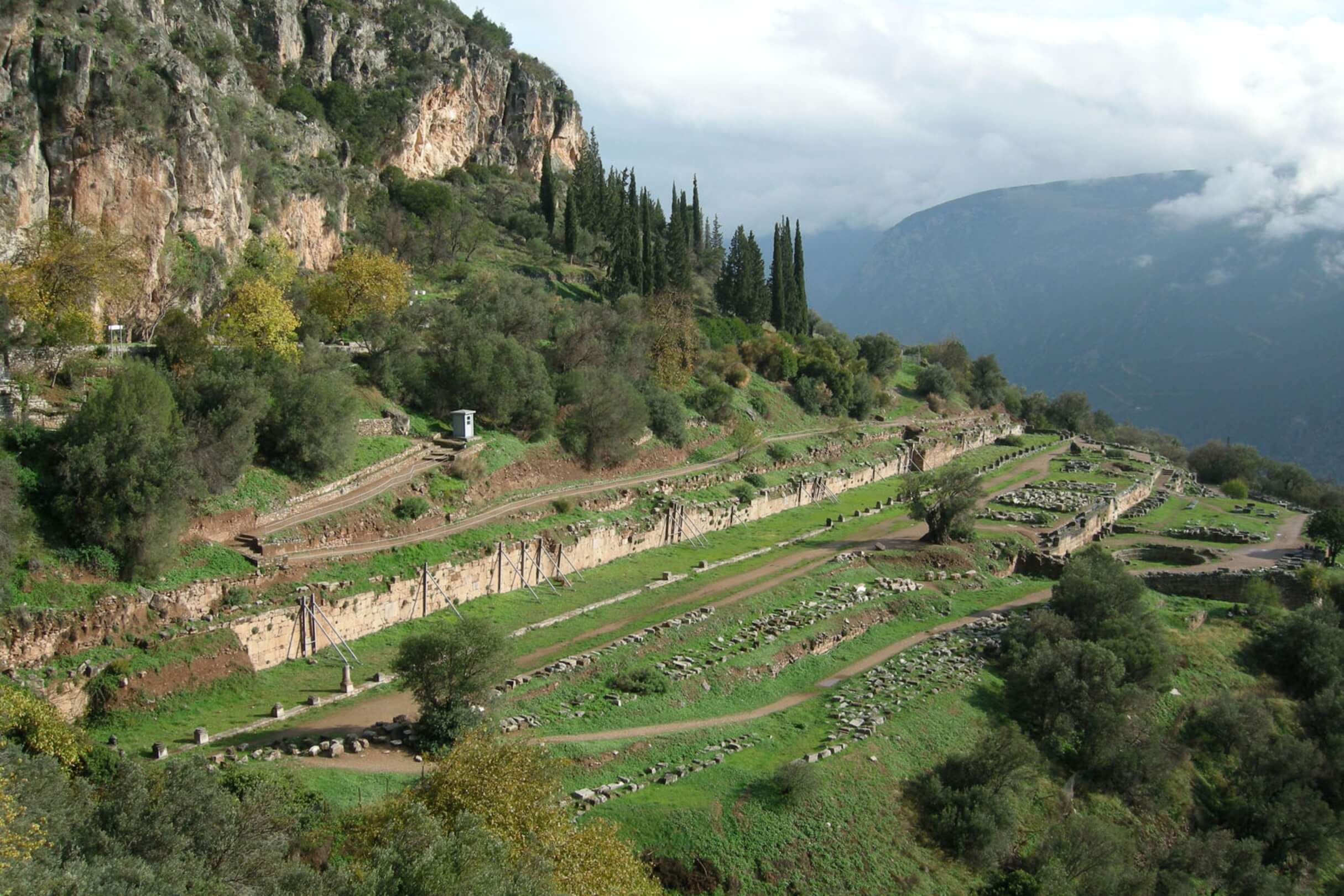
Erosion is attributed to wind and water processes. Wind causes loading and mechanical damage to structures as it transports water, salts, dust and gases to the object. Moreover, it can increase or decrease the chemical action and impact of water and gases on cultural heritage monuments, buildings, sites and objects resulting in deposition of pollutants, biological corrosion, cycles of drying and wetting, mechanical wear of the attacked surfaces, and abrasive impact. All these adverse effects can cause considerable damage varying from changes to the external parts of the cultural heritage structures to structural damage including partial or total collapse. As regards the sea and river erosion processes, cultural heritage monuments, buildings and sites located at coastal and riverine areas are more vulnerable and susceptible.
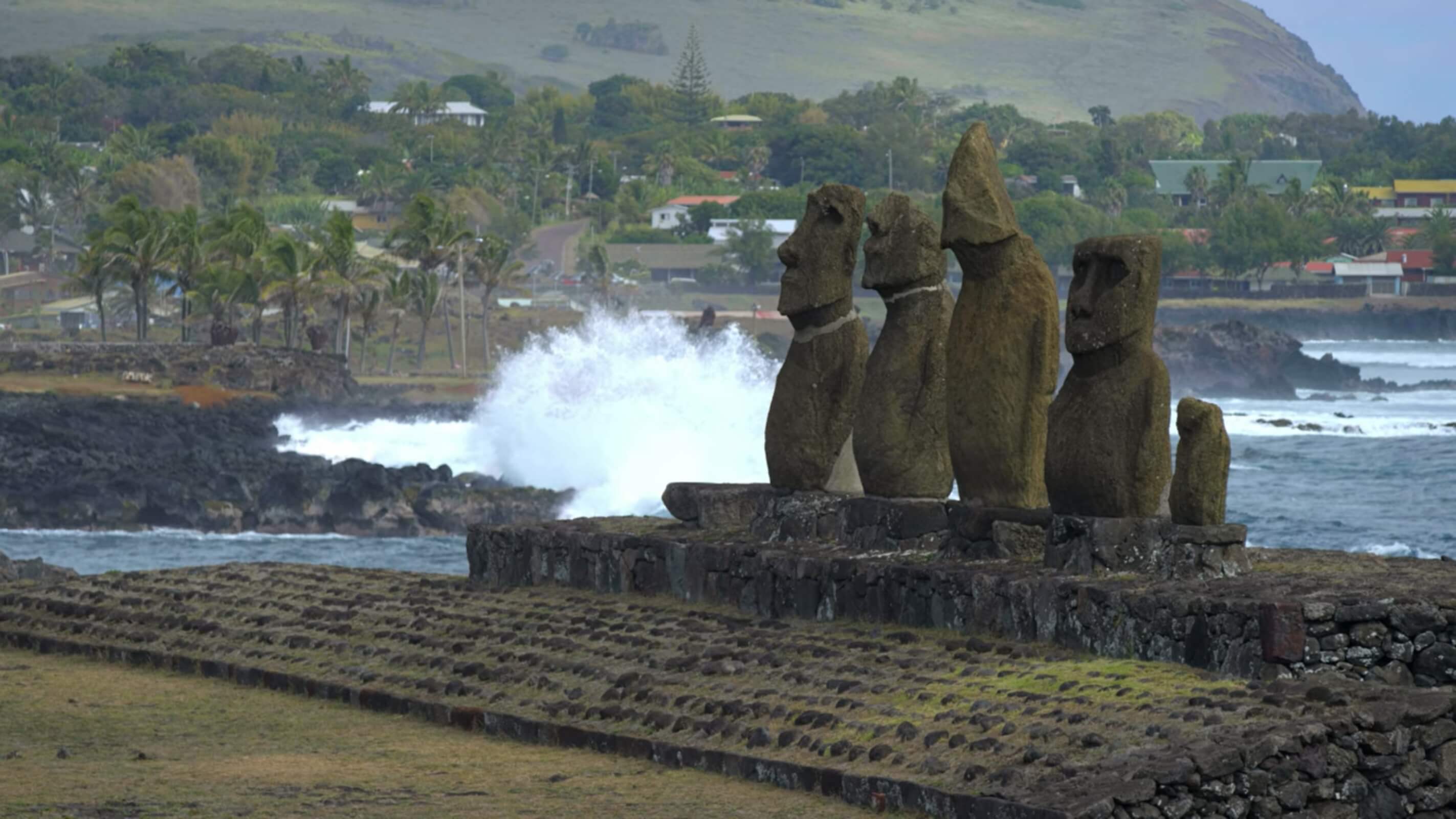
Easter Island (Rapa Nui, Chile) is one of the most remote inhabited islands in the world. It was uninhabited before Polynesian people arrived in the island probably between AD 300 and AD 800. The majority of the cultural heritage sites and objects in the Rapa Nui Island (almost 90 %) is concentrated in its coastal part. Moreover, in comparison to other Pacific Ocean Islands, Rapa Nui has no reef to protect its coastal environment composed of poor soils from the adverse effects of the climate crisis. The synergy of the aforementioned facts makes the island and more specifically its coastal cultural heritage extremely vulnerable to the increased frequency of storms and winds and to the subsequent coastal erosion as well as to other adverse effects attributed to the evolving climate crisis. Hundreds of the famous ceremonial monuments encircling the island are in great danger due to the impact of the aforementioned effects.
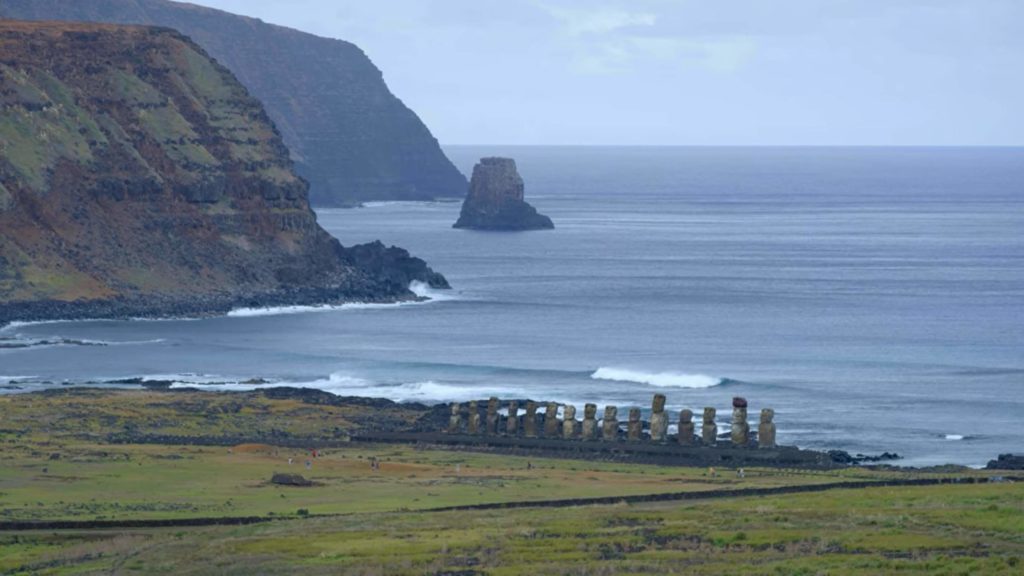
Climate crisis is considered to be on a disastrous scale. It induced a serious threat for our future, but also to our natural and cultural heritage. Extreme weather events including hydrological and meteorological hazards and related disasters increase with time and have high potential to form newly introduced conditions with direct and indirect adverse effects worldwide including cultural heritage buildings, sites and objects. The direct effects comprise structural and non-structural damage to cultural heritage buildings. The indirect effects are expanded to various sectors of the daily life and related activities. They should be considered as an ongoing emergency situation, which require effective response for the sustainability of cultural heritage.
Cultural heritage could provide solutions on the problems rising from the climate crisis and play a significant role for sustainable development, as it usually includes knowledge about the environment, the weather, the atmosphere and the biodiversity and offers environment-friendly techniques and sustainable practices.
The man-made disasters with a high potential to affect cultural heritage are armed conflicts and technological disasters. Based on the definition of the Uppsala Conflict Data Program (UCDP), an armed conflict is a contested incompatibility that concerns government and/or territory where the use of armed force between two parties, of which at least one is the government of a state, results in at least 25 battle-related deaths in one calendar year.
Based on the United Nations Office for Disaster Risk Reduction (UNDRR), technological hazards refer to hazards that stem from technological or industrial conditions. They comprise technological or industrial accidents, dangerous procedures, infrastructure deficiencies, and specific human activities. These events have high potential to cause death, injury, disease, or other health impacts, as well as damage to the natural and built environment including cultural heritage monuments, buildings, sites and objects.
Technological hazards can also attributed to natural hazards and related disasters, as in the case of the Fukushima Daiichi nuclear disaster induced from the Great East Japan tsunami generated by the Mw = 9.0, 11 March 2011 Tōhoku (Japan) earthquake.

Man-made hazards and related disasters including armed conflicts are characterized by high potential for causing considerable damage to cultural sites, buildings and objects. Several museums, temples, mausoleums, tombs and mosques in UNESCO World Heritage sites were recently destroyed by armed conflicts in various countries of the near East including Syria, Iraq and Jordan. One of the most characteristic examples is the city of Aleppo in Syria, which has become a center of fighting. The Great Mosque of the city had a minaret more than 1000 years old. In April 2013, the mosque was engulfed in a heavy combat and a shelling resulted its complete destruction. Since then, many buildings close to the mosque have been also completely destroyed by explosives.
Similar intentional destruction of cultural heritage sites and buildings are taking place around the world. Another characteristic example comes from Europe and the armed conflicts that took place in the former Yugoslavia in the 1990’s. During these conflicts, many sites and buildings comprising libraries and museums, churches, parishes, monasteries, bridges, palaces and buildings in historical city centers suffered damage due to shelling and other activities and in many cases complete destruction.
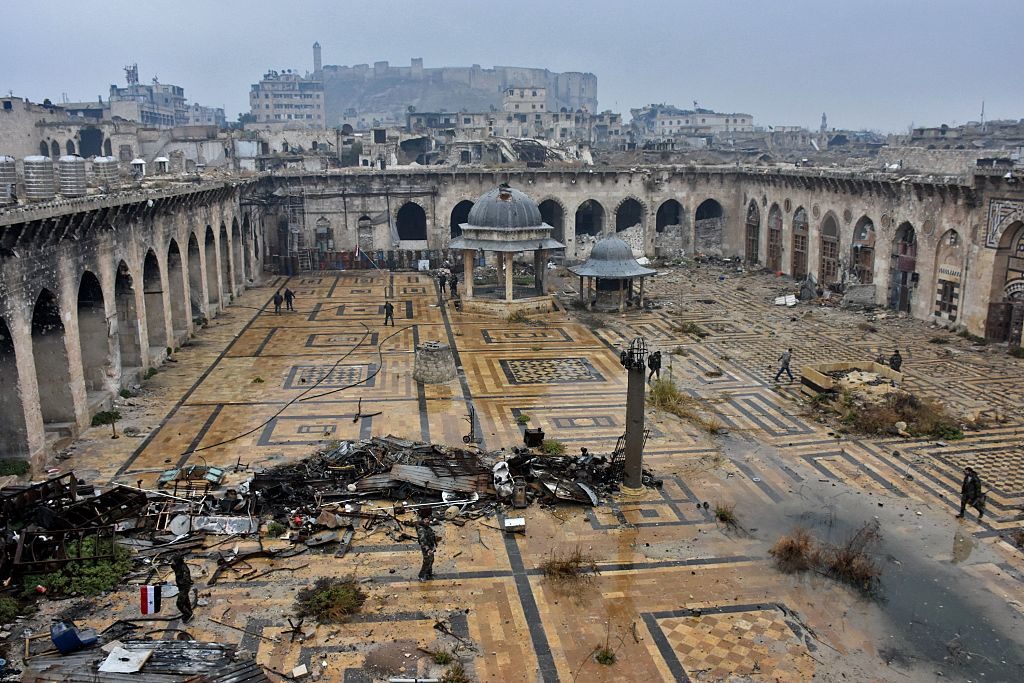
Cultural heritage buildings are affected by air pollution. Their external parts (perimeter walls, facades) were often blackened due to the past industrial processes. In present, cultural heritage buildings take on warmer tones, which are less annoying to look at, but no less harmful. The hydrometeorological characteristics of an area could also affect cultural heritage buildings by favoring the biological colonization on external building parts and increasing the deposition of materials on facades. These effects are able to cause not only aesthetic problems but also performance implications in the affected buildings.
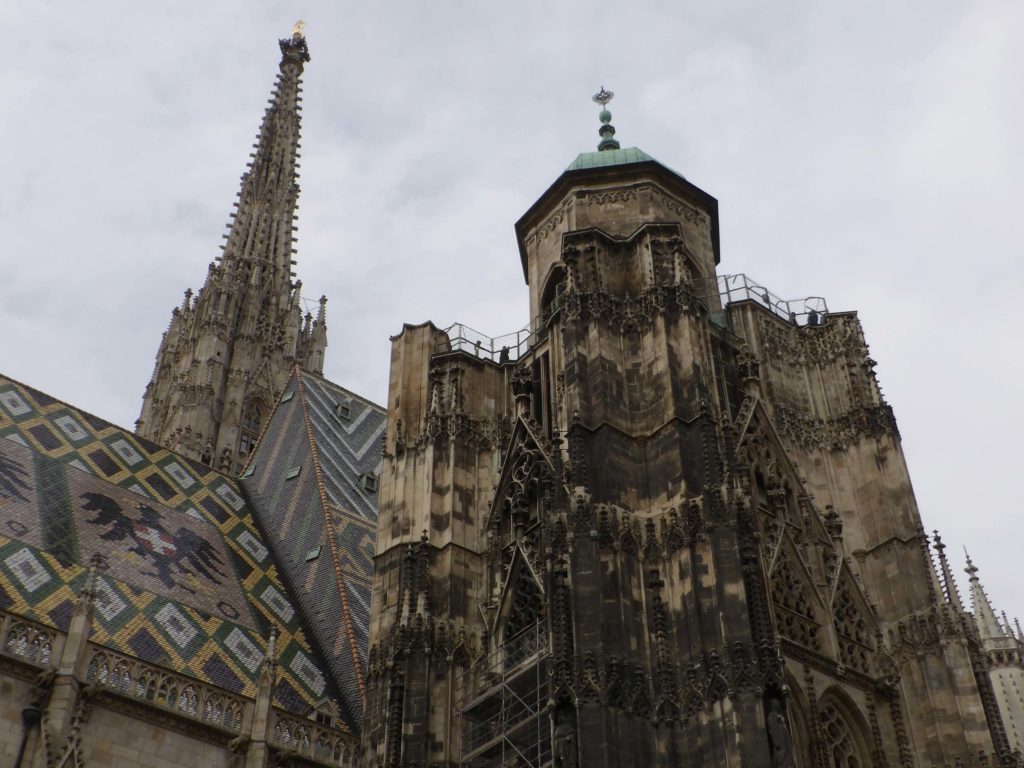
The St. Stephen’s Cathedral (Stephansdom) was completed in 1160 and it is one of the Vienna’s most recognizable symbols. The cathedral is 107 m long, 40 m wide, and 136 m tall at its highest point. It was built of limestone and the original color of its exterior perimetric walls was white. Over the centuries, its exterior walls tended to darken due to the accumulation of pollutants, particularly carbonaceous particles. Surface materials exhibit layers of black decay that may result in substantial damage and loss of material. Recent restoration projects and works which are under development nowadays have again gradually returned some portions of Stephansdom to their original white.
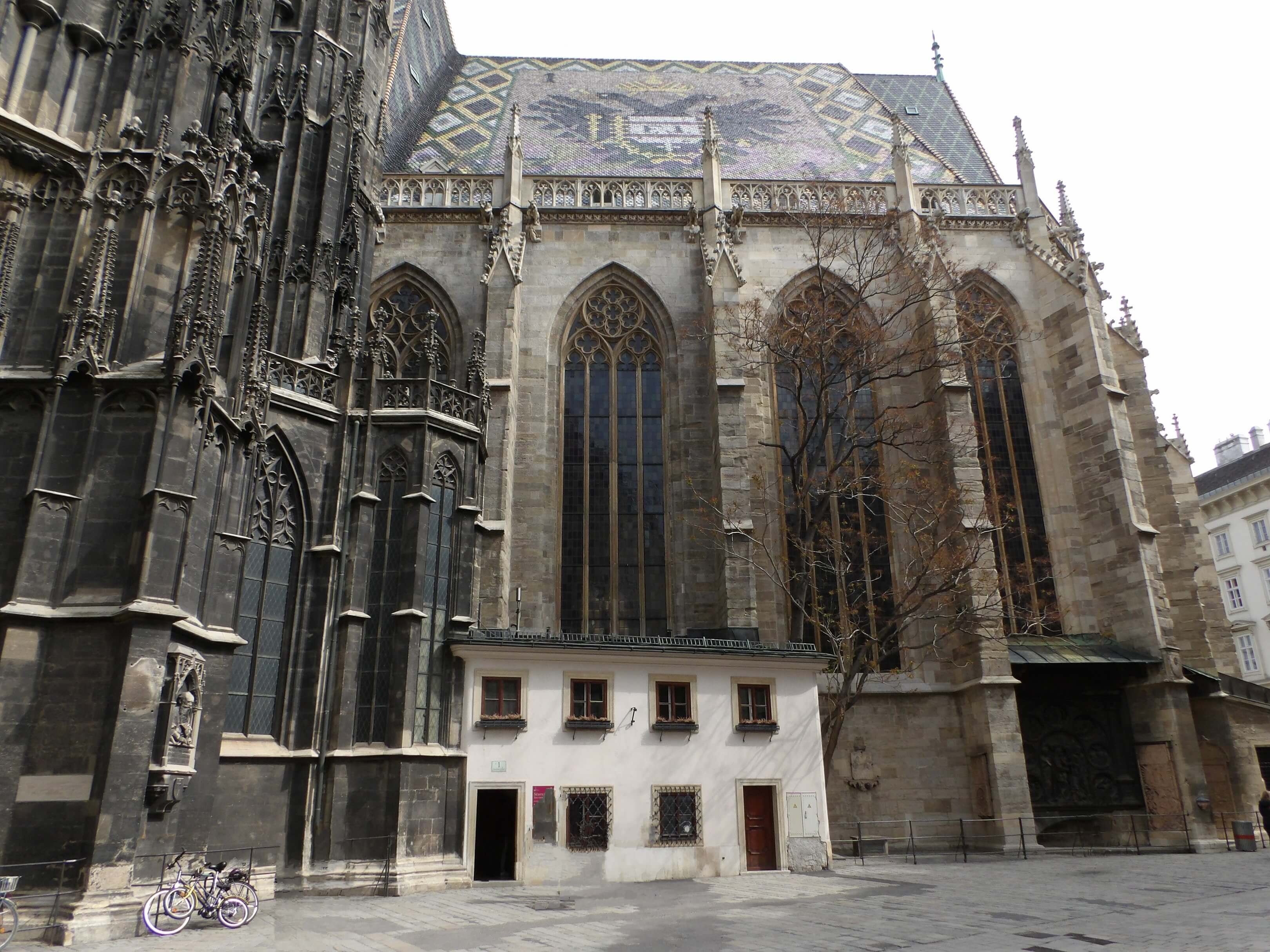
An explosion is the large-scale, rapid and sudden release of stored energy. This release causes increase in temperature and pressure so that the materials are converted into hot compressed gases. Since these gases are at high temperature and pressure, they expand rapidly creating a pressure wave, which is known as shock wave. The shock wave is resulted from the combination of the air blast and the ground shock. As the shock wave reaches a building, it is reflected, resulting in amplification of the over-pressure by some significant factor ranging from 2 up to 13. The air blast enters the building through shattered doors and broken windows and affects not only the non-structural elements of the building, but also its structural elements comprising slabs and columns. The shockwave undergoes several diffractions attributed to the interaction with various surfaces resulting in increase or decrease of the pressure. The air blast is the main mechanism for producing damage in the built environment not only surrounding the explosion site but also in larger distances.
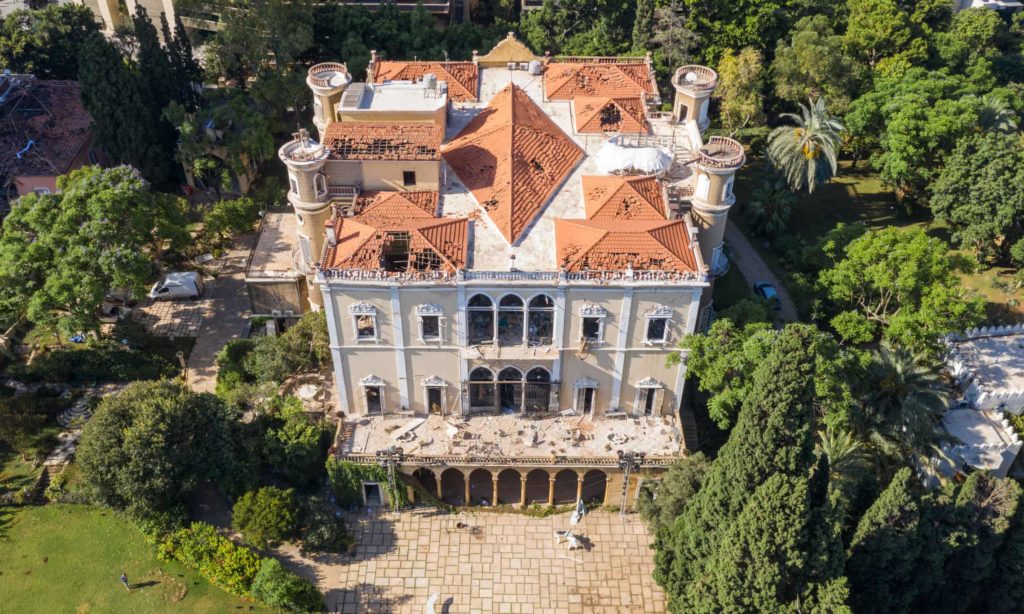
On the afternoon of 4 August 2020, a fire broke up in the waterside Warehouse 12 at the Port of Beirut City. The warehouse contained a huge amount of ammonium nitrate (2750 tons) and it was located next to a grain silo and close to other port facilities. As the fire ranges on, a first explosion caused a smoke cloud over several meters height, which was followed by a long series of white light flashes at the base of the smoke column accompanied by popping sounds. Few seconds later, a massive explosion struck Beirut. It released a high toxic red-orange smoke cloud of nitrogen dioxide resulted from the explosion of the stored ammonium nitrate and surrounded by a white condensation cloud. The second explosion vanished the warehouse, devastated the port and the adjacent facilities and greatly affected the city’s densely populated residential neighborhoods and downtown shopping districts (Lekkas et al., 2020). It was felt in northern Israel and in Cyprus located at a distance of 240 kilometers westwards.
As regards the impact on the local population in Beirut, the blast was felt up to two miles radius, an area where more than 750,000 people live. This massive explosion resulted 178 fatalities, more than 6000 injured and about 300,000 homeless people (data on August 14, 2020). It resulted in considerable damage to buildings and vehicles. The blast shockwave was the dominant factor to account for the building damage surrounding the explosion site.
The Beirut port explosion and the subsequent blast shockwave caused severe damage to some of the most historic neighborhoods of Beirut City comprising hundreds of historical buildings including culture sites, historical areas and heritage buildings. The affected historical areas are the Mar Mikhaël, Sayfé, Gemmayzeh, Geitawi, St. Nicolas, Zukak el-Blatt, Minet el-Hosn and Bachoura areas. 480 heritage buildings were damaged by the explosion. More specifically, 85 were severely, 370 moderately and 25 slightly damaged. 160 historical buildings characterized by special design and construction features were also affected (Ministry of Culture – Directorate General of Antiquities‘ Beirut, 2020; PwC, 2020).
The Gemmayzeh and Mar Mikhaël areas are characterized by large concentration of historic buildings. The majority of them was affected by the ground shock and the blast shockwave both produced by the explosion in the port. About 60 historical buildings were on the verge of collapse (UNESCO, 2020). The historical buildings in Beirut were already vulnerable due to lack of preservation.
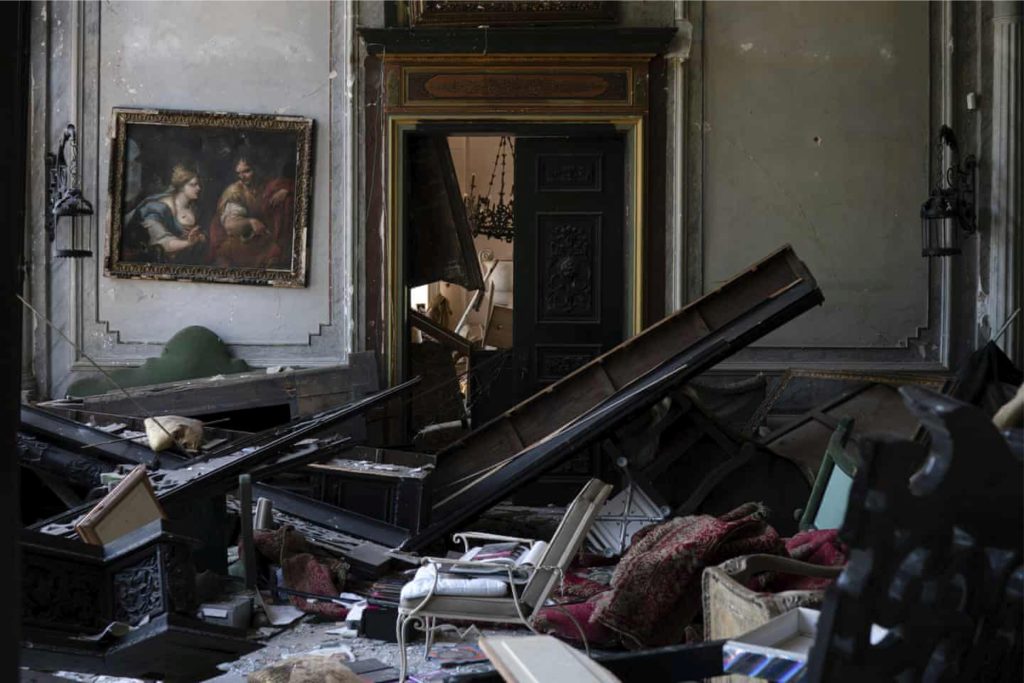
Looting of antiquities comprises an illegal excavation on a site in order to remove and sell any cultural objects found. In order to find and remove these objects, the looters usually dig a shallow hole with depth of a few meters, but sometimes they use heavy tools and equipment, which threaten access to cultural heritage buildings and sites and destroy non-structural and structural elements of the buildings resulting in complete destruction. This activity is endemic in countries and areas of the Mediterranean Sea including Italy, Greece, Turkey, Cyprus and Egypt among others, which are rich of archaeological cultural heritage sites and objects. Similar illegal activities occur in Africa, South East Asia and South America, where a large part of past civilizations are still unknown to formal historical and archaeological sciences and uncovered.